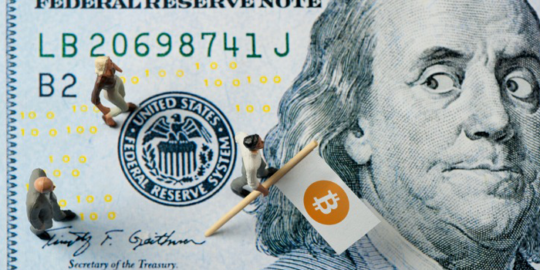Cryptocurrency (crypto), is a type of digital or virtual money that employs encryption to ensure its security. It is decentralized, meaning that no government or financial organization has any influence over it, and it runs without a central bank. Among the most well-known cryptocurrencies are Bitcoin, Ethereum, and Litecoin.
NFTs, on the other hand, are unique and often non-fungible digital assets that are typically difficult to replicate or exchange with other similar assets – which is one of the features that make them valuable as digital assets. This is because each NFT is created as a unique digital token that is verified on a blockchain, which makes it difficult to duplicate or counterfeit.
However, NFTs can be exchanged with others, although the process can be more complex than exchanging other types of digital assets. The exchange of NFTs can take place through various online marketplaces, where buyers and sellers can conduct transactions using cryptocurrencies like Bitcoin or Ethereum.
They are kept on a blockchain, a decentralized digital ledger that securely and openly records transactions. Each NFT has a distinctive digital signature that makes it hard to copy or forge. Digital art, tweets, music, films, and even virtual real estate are all examples of NFTs.
NFTs and crypto are not the same, but they do have certain underlying similarities that allow them to work together. Both are decentralized, which means they are not under the control of a single entity, and both rely on blockchain technology to operate. They are therefore perfect for transactions that demand security and anonymity.
The usage of smart contracts by both crypto and NFTs is one of the most important connections between them. With smart contracts, the details of the agreement between the buyer and seller are directly encoded into lines of code. These contracts self-execute. They are executed automatically when specific circumstances are satisfied and are maintained on a blockchain. Both cryptocurrency and NFTs employ smart contracts to make sure that transactions are safe, transparent, and irrevocable.
Crypto and NFTs are related through their potential for investment.
In recent years, interest in cryptocurrency and NFTs has skyrocketed as many investors saw them as opportunities to earn substantial returns on their investments. It’s crucial to remember that investing in cryptocurrencies and NFTs can be dangerous because their values might fluctuate and are influenced by the market.
The development of NFT markets that take cryptocurrencies as payment is one of the most noteworthy examples of the connection between cryptocurrencies and NFTs. With these platforms, customers may buy NFTs using bitcoin, resulting in a simple and safe transaction. As more individuals become aware of the potential applications and advantages of both crypto and NFTs, this has raised interest in both.
Crypto and NFTs are related through their potential for creativity and innovation.
For musicians, painters, and other creatives, NFTs have created new opportunities to commercialize their work in previously impractical ways. Artists may sell their work to customers directly by producing one-of-a-kind digital assets that are housed on a blockchain, eliminating the need for middlemen like galleries or auction houses.
Virtual reality and gaming have gained new prospects thanks to cryptocurrency and NFTs. NFTs and blockchain technology are increasingly being used in online games and virtual worlds to produce in-game goods that can be bought, sold, and exchanged outside of the game. Because of this, a new gaming and virtual reality economy has emerged, including some expensive unusual in-game objects.
The connection between cryptocurrencies and NFTs is not without debate, though. Opponents contend that NFTs and cryptocurrencies both lead to an unethical and destructive kind of capitalism. Concerns about cryptocurrency’s carbon footprint arise because mining cryptocurrencies uses a lot of energy. Similar criticism has been leveled at the environmental effects of the blockchain technology that NFTs rely on as a result of their high demand.
Furthermore, there are issues with the speculative character of both cryptocurrency and NFTs. These can cause inflated prices and bubbles that can pop at any time, leaving investors with substantial losses. Some investors view them as a quick method to gain money.
The relationship between crypto and NFTs is still growing despite these difficulties.
The future of money, art, and technology will undoubtedly continue to be shaped by blockchain technology as it develops further and new applications for both cryptocurrency and NFTs appear. Before investing, it’s crucial to approach both with prudence and educate oneself on their advantages and disadvantages.
Important aspect of the relationship between crypto and NFTs is the use of digital wallets.
A digital wallet is a piece of software used to store NFTs in addition to cryptocurrencies and other digital assets. Digital wallets give users the ability to send and receive transactions as well as securely manage and store their digital assets.
For the usage and ownership of both cryptocurrency and NFTs, digital wallets are necessary. They are an essential instrument for taking part in the crypto and NFT markets and offer a safe and practical way to manage digital assets.
Digital wallets come in a variety of forms, including hot wallets and cold wallets. Hot wallets are more practical for daily usage but are connected to the internet and more susceptible to theft and hacking. On the other side, cold wallets are offline and are thus more secure, but they are less practical for everyday transactions.
Several digital wallets now have built-in capability for storing and managing NFTs, which are special digital assets. Because of this, it has become simpler for sellers and buyers to engage in the expanding NFT market.
An integral component of the interaction between cryptocurrencies and NFTs is digital wallets. They are essential for taking part in the crypto and NFT markets because they offer an easy and safe way to manage digital assets. The significance of digital wallets in handling these priceless digital assets will increase along with the adoption of cryptocurrencies and NFTs.
One example of a digital wallet that supports both cryptocurrencies and NFTs is the Cardano wallet. Cardano is a blockchain platform that uses a proof-of-stake consensus algorithm, making it more energy-efficient than other blockchain networks. The Cardano wallet allows users to store, send, and receive cryptocurrencies such as ADA, as well as NFTs built on the Cardano blockchain.
The Cardano wallet is user-friendly and provides a seamless experience for managing both cryptocurrencies and NFTs. It also offers features such as staking, which allows users to earn rewards for holding their ADA in the wallet.
Conclusion
The connection between cryptocurrencies and NFTs is complex and multidimensional. Although not the same thing, they have numerous things in common that make them work well together. Both are decentralized, rely on blockchain technology, and employ smart contracts to guarantee safe and open transactions. Also, there is more interest in both cryptocurrencies and NFTs as prospective investments as a result of the growth of NFT markets that take cryptocurrencies as payment.








